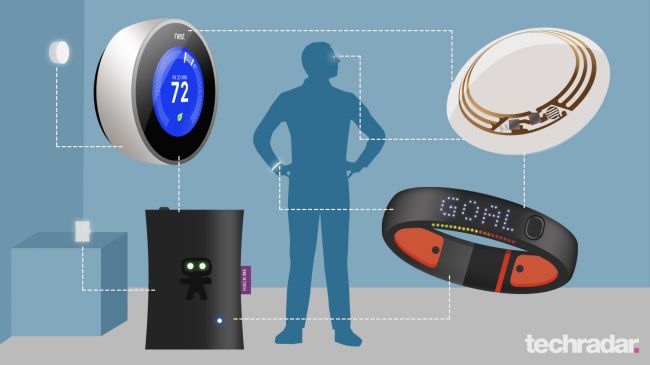Un bracelet connecté qui vous veut du bien
15/07/2015(in)former, adhérer, co-décider | Cancer Contribution : construire ensemble les pratiques de demain
15/07/2015A guide to the Internet of Things
You wake up in the morning and the fitness tracker on your wrist has recorded how well you slept, uploading the results to your Twitter account. Your coffee machine reads your Twitter feed and knowing you’re awake, begins brewing your first coffee of the day.
Your bedroom lights, following your fitness tracker, turn on low and begin their slow brightening over the next few minutes as the bathroom starts warming your towel. Lights automatically turn on and off as you walk down the hall to the kitchen where your coffee is now waiting. As you leave for work, the robotic vacuum cleaner begins and updates its cleaning progress map to your phone.
Welcome to the world increasingly being envisioned by tech giants that’s powered by the ‘Internet of Things’ (IoT) and promising to change the way we live. But what actually is this ‘Internet of Things’? Basically, it’s the combination of low-cost, low-power processors with ‘real-world’ electronic sensors and wireless network connectivity increasingly being added to a wide range of electrical devices. These sensors can measure everything from temperature and humidity to pressure, proximity, sound, light, gravity, movement, feedback and through on-board software, devices can record and action those measurements over the internet.
IoT was front-and-centre at the Consumer Electronics Show in Las Vegas this year, starting what will inevitably be a year we see tech ventures, large and small, announce a vast array of gadgets that connect to the internet. Vacuum cleaner king Dyson will launch its 360 Eye robotic vacuum cleaner this year. With built-in Wi-Fi and Dyson’s patented Cyclone cleaning tech, it’ll update your phone showing you its cleaning map and progress.
Like the idea of a coffee machine you control from an app? Denmark’s Scanomat has developed the stylish TopBrewer that lets you choose your coffee type from your Android or iOS phone or tablet. And if you’re ever in Copenhagen, head to the TopBrewer Café, where there are no queues, just your coffee ordered, brewed and paid for by your phone.
Key to this IoT boom has been the continuing fall in the cost of the technology involved. We’ve seen this over the last couple of years with everything from 3D printing to smartwatches. The cost of adding Bluetooth wireless connectivity to a device has also crashed through the floor. Photodetector sensors in new heart-rate fitness trackers sell for as little as 50 cents each in commercial quantities; their green LEDs for as little as one cent. But it’s the ever-falling cost of processing power that’s putting computer chips into almost any gadget.
Unlike previous technology revolutions, the low cost of components has torn down the traditional ‘barrier to entry’ this time. Today, you just need an understanding of how IoT tech works – the sensors, the wireless technology, the processors, the cloud computing that increasingly forms the backbone – and a great idea. An idea alone won’t make you millions, but thanks to crowdfunding sites like Kickstarter and indiegogo, IoT innovation can be driven as much by the tech community as it can by the big end of town (think LIFX). And those big corporates know it.
In late 2013, chip giant Intel joined the burgeoning DIY ‘maker’ market by releasing its first small computer development board called Galileo. Part of the ‘Intel Maker’ campaign, Galileo is powered by a 32-bit 400MHz single-core Pentium-class processor called the Quark X1000 and designed specifically to promote development of IoT projects.
To push it along, Intel planned on donating 50,000 boards to 1,000 selected universities worldwide, such as the University of Melbourne, during 2014. Since then, the Galileo 2 and super-tiny Edison boards have also been released.
Source: www.techradar.com




